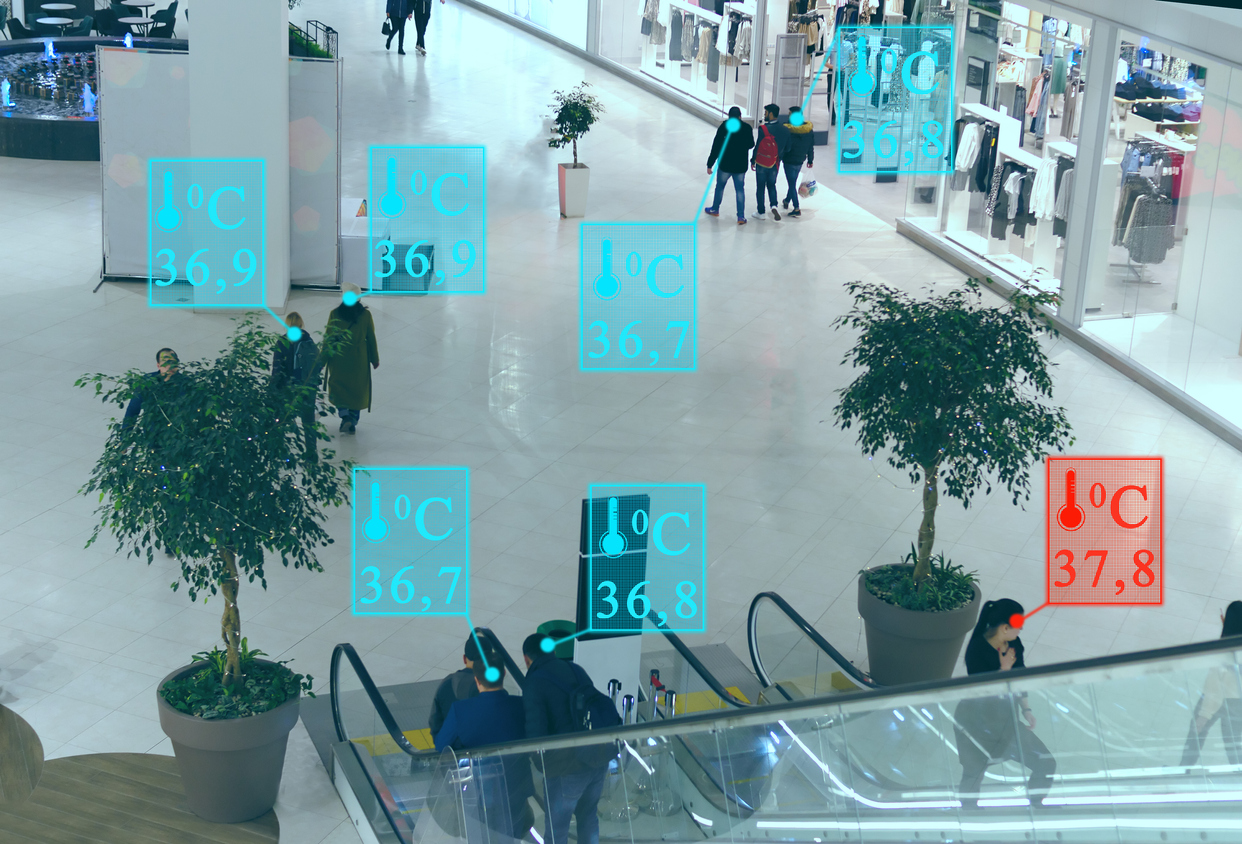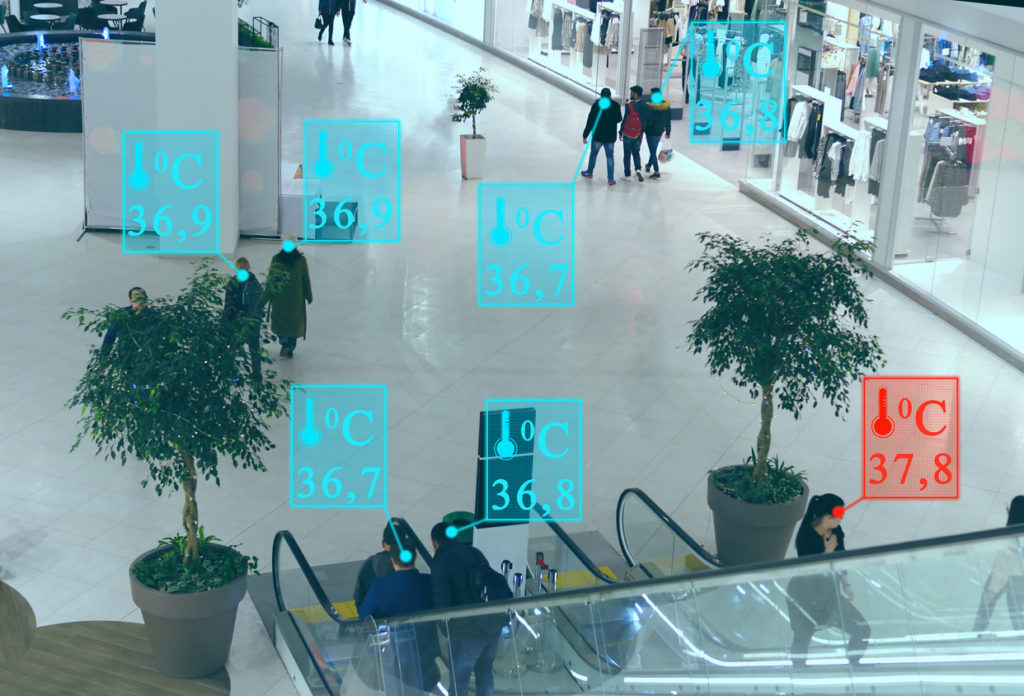How We Can Use the Internet of Things to Fight Virus Outbreaks

"*" indicates required fields

 The current coronavirus outbreak (COVID-19) may be less fatal than the previous Ebola and SARS virus epidemics, but it has already spread to more people and more countries in a shorter time frame. It has gotten to such an extreme level that, on March 11, 2020, the World Health Organization (WHO) formally declared COVID-19 to be a global pandemic. Like most other outbreaks, COVID-19 faces a lot of serious challenges like reducing the spread of the virus, identifying the origin of the epidemic, and acquiring enough medical resources to treat all patients with severe symptoms.
The current coronavirus outbreak (COVID-19) may be less fatal than the previous Ebola and SARS virus epidemics, but it has already spread to more people and more countries in a shorter time frame. It has gotten to such an extreme level that, on March 11, 2020, the World Health Organization (WHO) formally declared COVID-19 to be a global pandemic. Like most other outbreaks, COVID-19 faces a lot of serious challenges like reducing the spread of the virus, identifying the origin of the epidemic, and acquiring enough medical resources to treat all patients with severe symptoms.
The fast spread of COVID-19 has exacerbated and exposed a lot of structural problems in the health response systems of governments all over the world. Most of these problems point towards an inability to scale the solution due to the expansion of the outbreak. The system is further strained because of the need to trace the origin of the outbreak, quarantining infected patients, treating seriously ill people, and preventing cross-infection between medical staff and patients, as all of that requires many human resources. These challenges raise the question, “is there a system or a solution that is easily automated and scalable?”
The IoT or the Internet of Things is an automated and scalable solution that has overseen explosive growth in various industries like automated manufacturing, asset management, and wearable consumer electronics. IoT includes several functional components, such as analytics, transfer, data collection, and storage. Sensors installed on mobile, end-user hardware such as robots, health monitors, or phones collect the data. That mobile data is then sent to the central cloud server for decision-making and analytics, like whether a machine requires proactive maintenance to prevent unexpected breakdowns or if a patient needs to come in for a check-up.
At this moment in time, IoT is already being used to manage various aspects of COVID-19. For instance, drones are already being used for public surveillance to ensure the wearing of masks and quarantine. AI is also being used to predict future outbreak areas as well.
IoT can have a lot of different applications during an outbreak due to the numerous and diverse datasets that are collected by mobile devices. It can be easily used to trace the origin of an outbreak. A recent study conducted by researchers at MIT used aggregated mobile phone data to trace in granular details of short periods and distances, the spread of dengue virus in Singapore during 2013 and 2014. It clearly suggests that overlaying geographic information system (GIS) on IoT mobile data from infected patients can do a couple of things:
It can help epidemiologists search for patient zero
It can assist in identifying every person who has come into contact with the infected patients and could be at risk of getting infected or spreading the infection.
IoT can also be used to ensure patient compliance after the infected people are entered into quarantine. The public health personnel can then monitor which patients remain quarantined and which patients have breached their quarantine. The IoT data can also be used to help track down others who may have been exposed due to the breach of quarantine.
The best thing about IoT is that its scalability can be great for monitoring all patients who are at a risk that warrants quarantine but aren’t serious enough to warrant in-hospital care. Currently, the daily check-up of patients is done manually by health workers who are going door-to-door. In one instance, a healthcare worker had patients stand in their apartment balconies, so he could fly a drone to take their temperatures with an infrared thermometer. With IoT, patients can have their temperatures taken and uploaded via their mobile devices to the cloud for further analysis. That way, healthcare workers can not only collect more data in less time but also reduce the chances of cross-infection with other patients. Apart from that, IoT can offer relief to the overworked staff at hospitals, and it has already been used in the remote monitoring of in-home patients with chronic conditions like diabetes or hypertension. Telemetry is the transmission of biometric measurements such as blood pressure and heartbeat from wireless, wearable instruments on patients to the central monitoring unit, and it has been used in hospitals to monitor various patients with the aid of a minimal staff. IoT can be used here to reduce the workload and enhance the efficiency of medical staff, while also reducing the exposure of healthcare workers to deadly infections at the same time.
The components of IoT and the underlying technology can be used to enable a healthcare system to deal with disease outbreaks that already exist. However, they are fragmented and not connected at this moment. Therefore, the system needs to build up to its infrastructure quickly to connect the various components of data collection, storage, and processing. This must be done so that the system can scale and expand for disease tracking, preventive quarantine, and the in-patient care of the infected individuals.
Percento is a Professional IT Consulting, Implementation and Management firm. To find out how we can help your organization, please contact one of our friendly sales representatives for a review of your system and a comprehensive (No Obligation) proposal of services. Call today toll-free at 800.614-7886 [Austin | Dallas | Houston | League City | Sugar Land | The Woodlands | San Antonio] or email us at sales@percentotech.com.